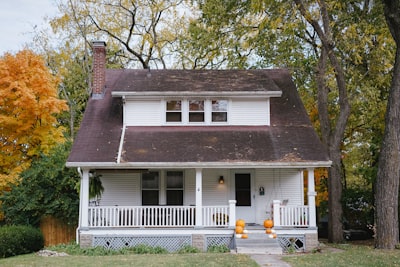One of the worst types of winter storms is the ice storm. Unlike snow which normally doesn't adhere to the branches and trunk of a tree, freezing ice will coat and weigh it down with a heavy load. This extra weight places severe stress on the tree. 
Trees that fall in ice storms often do so because they had a weakness that could have been spotted ahead of time had the property owner thought to look for them. Fallen trees and branches damage homes, property and even cause electrical outages when they take out power lines. While the subject of tree weaknesses is very extensive, four of the important ones are considered below.
Multiple Tree Trunks
A large tree with more than one trunk is a problem because the area where they join together tends to be weak. This is especially true when the trunks join in a V-shape. If one or more of these trunks are leaning outward at a severe angle, they are at risk of falling in an ice storm.
Dead Branches
It's just a matter of time before a dead branch falls. The longer it stays up in the tree, the more it weakens from decay. Any dead branch that is large enough to cause damage or harm, should be removed immediately.
Leaning Trees
A leaning tree is not necessarily at risk of falling if its tilt is not pronounced and if it's always been that way. If the tilt of a tree is noticeably increasing, it is going to fall. If you've just noticed a leaning tree on your property, then inspecting its roots will give you a good indication of its stability. If the ground on the opposite side of the lean is cracked or raised up, it means that the tree is in the process of toppling over. The ground is raised and cracked because it is beginning to give way to the leverage created by the leaning tree.
Construction Near a Tree
Construction requiring digging in the root zone of a tree means that roots have probably been severed. One of the functions of roots is to serve as anchorage for the tree. When these are severed, the tree is in danger of falling in the direction opposite the severed roots. The closer the construction's proximity to the tree trunk, the greater the danger.
Before an ice storm strikes, inspect your trees for the above weaknesses. If any trees look questionable, get them checked, repaired or removed. Preventing injury, property damage and an unnecessary home insurance claim are your top priorities.
Protect your property during winter’s harsh weather. Call Illinois Auto Quote at 815-363-8100 for more information on Illinois home insurance.